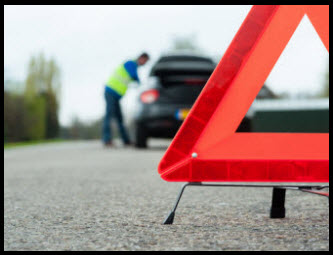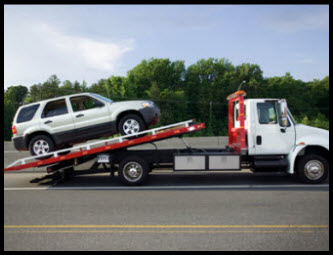Archives: September 2020
An important element is driving on healthy tires when it comes to the safety of your vehicle. Typically, from time and use, tires bald and all too often, drivers will drive on them. If only to save a few bucks, the tires are frequently neglected. We at Highway 30 Towing would like to discuss the dangers of balding tires to help you avoid the consequences of driving on them.
Symptoms of Balding Tires
We first would like to take the opportunity to discuss the signs of bald tires before we tackle the dangers of driving with bald tires. Recognizing the signs can play a significant role to help your awareness of replacing problematic tires.
Tire Wear Bars
When the tread is completely worn, the tire wear bars become more noticeable. Being the width of a pencil, they run across the base of the tread from side to side. When they are the most obvious is when the tread depth reaches 2/32”. If the tread being worn down to the treadwear in an indicator it needs to be replaced since the tire is no longer safe or legal for use.
Low Tire Tread Depth
Should you suspect the tread is heavily worn, you may check the tread with this simple and effective tread inspection at home.
– Place a penny and insert its edge into a groove in the tire’s tread, so it touches the bottom.
– Lincoln’s head should be up as it is inserted into the tread.
– In the event the top of Lincoln’s head is fully visible, the tire should be replaced as this indicates the tire’s tread depth is at or below 2/32” (the legal minimum).
Tire Cracks & Bulge
Periodically, you should perform an overall visual inspection of your tires, especially should you feel or hear anything unusual from them when driving. Any cracks or cuts deep enough that the steel belts or body cords are exposed should be looked for. Because this can indicate internal damage as well, look unusual bulges in the tread or sidewalls as well. If you are ever unsure, have a professional inspect the tires.
Risks of Driving on Bald Tires
In addition to be risky, driving on bald tires can result in vehicle damage from either tire failure or loss of vehicle control can be costly. To prevent unnecessary expenses and risks, replacing bald tires immediately is essential.
1) Loss of Control & Hydroplaning. When driving on bald tires in the rain as it increases the chances of skidding or hydroplaning, possible accidents, needed repairs, and hefty insurance costs can be expected.
2) Inefficient Braking. While driving, vehicle’s brakes are trusted to work, no matter the speed. When driving on anything other than a perfectly smooth road free of sand, dirt and debris, bald tires compromise your brakes’ ability to stop by providing reduced traction. Poor braking efficiency increases the chance of being involved in an accident in addition to the unwanted repair costs.
3) Tire Punctures. Bald tires are more easily punctured since there is little remaining of the tread. Rising the probability of losing of control of your vehicle, a puncture could cause a blowout is feasible and will lead to flat tires.
Roadside Assistance & Towing Services in Cassia, Gooding, Jerome & Twin Falls Counties in Magic Valley, Idaho & Jackpot, Northern Nevada
Because we depend on our tires for our safety when driving, it is critical that the tires are taken care of properly. Be proactive and replace your tires if they are considered bald. To help extend their tread, be sure to check your tires’ tread and keep them properly maintained. Highway 30 Towing is readily available to assist you, no matter if you need a tow or roadside assistance in the Greater Twin Falls, ID area.
It is important to practice defensive driving if you don’t already, since the weather can take a turn at any time. It may surprise you that weather conditions beyond ice and snow can be a risk to drive in. Below are the worst conditions to drive in that we Highway 30 Towing would like to share to help you be more cautious.
Dangers of Driving in the Rain
Rain is responsible for more driving deaths than snow in 39 of 50 states, and sometimes up to 300 in a single day compared to the typical 20-30in some cities such as Los Angeles. People may not be as cautious on a wet road as they are on an icy road, while rain more common than snow and fog in many areas. Visibility is potentially reduced in rain as well. In places that do not get a lo of rainfall, rainy roads can be especially dangerous. This is due to the oil residue that builds up on the roads throughout the year. Even a light shower can make the roads incredibly dangerous when it hasn’t rained in a while.
Drive Slower in the Rain
1) Due to a build-up of oil residue mixing with water, the road is most dangerous when it first starts to rain.
2) When the road is wet, always slow down.
3) In the rain, brake slower and earlier. This allows for maintaining a safe distance from other vehicles and reduces the risk of hydroplaning.
4) Since it can cause your car to speed up if you hydroplane, do not use cruise control.
5) To make it easy for other drivers to see you in the rain, keep your headlights on.
6) Utilize a defroster.
7) Do not brake or turn the steering wheel suddenly should you hydroplane. Until the tires get traction again, slowly ease off the gas and steer straight.
How Does Fog Affect Driving?
Particularly when you encounter dense fog suddenly, fog can dramatically reduce visibility. The vehicles in front of you that may have stopped or slowed dramatically may go unseen. Use fog lights but never high beams which can cause glare that actually makes it harder to see if you have them. Because it keeps your taillights on for other drivers, be sure your headlights are on, even in the day. Since you may not be able to see more than 20 feet ahead, slow down and stay focused on the road.
When is it Too Windy to Drive?
When driving because gusts can actually blow your vehicle off course and cause you to lose control of the vehicle, strong winds can be dangerous. As they have more trouble maintaining control, high winds are most dangerous for large and high vehicles. When it’s windy, give trucks plenty of room. Take care to adjust your steering wheel if needed and driver slower than usual. Without jerking the wheel, should you need to steer yourself back in the right direction gently.
How to Drive in the Snow or Ice
Heavy snowfall reduces visibility and increases stopping distance. Just below the snow, it can also hide road hazards. Remember to drive slowly and accelerate and brake slowly when driving in the snow. Do not try to power up hills or you can lose traction as increase your distance from other vehicles.
Roadside Assistance & Towing Services in Cassia, Gooding, Jerome & Twin Falls Counties in Magic Valley, Idaho & Jackpot, Northern Nevada
Should you find yourself in collision or if you need roadside assistance services, call Highway 30 Towing of Twin Falls, ID and let us assist you!
Archives
- June 2022
- May 2022
- April 2022
- February 2022
- January 2022
- January 2021
- December 2020
- November 2020
- October 2020
- September 2020
- August 2020
- July 2020
- June 2020
- May 2020
- April 2020
- March 2020
- February 2020
- January 2020
- December 2019
- November 2019
- October 2019
- September 2019
- August 2019
- July 2019
- June 2019
- May 2019
- April 2019
- March 2019
- February 2019
- January 2019
- December 2018
- September 2018
- April 2018
- December 2017
- September 2017
- February 2015
- November 2014




